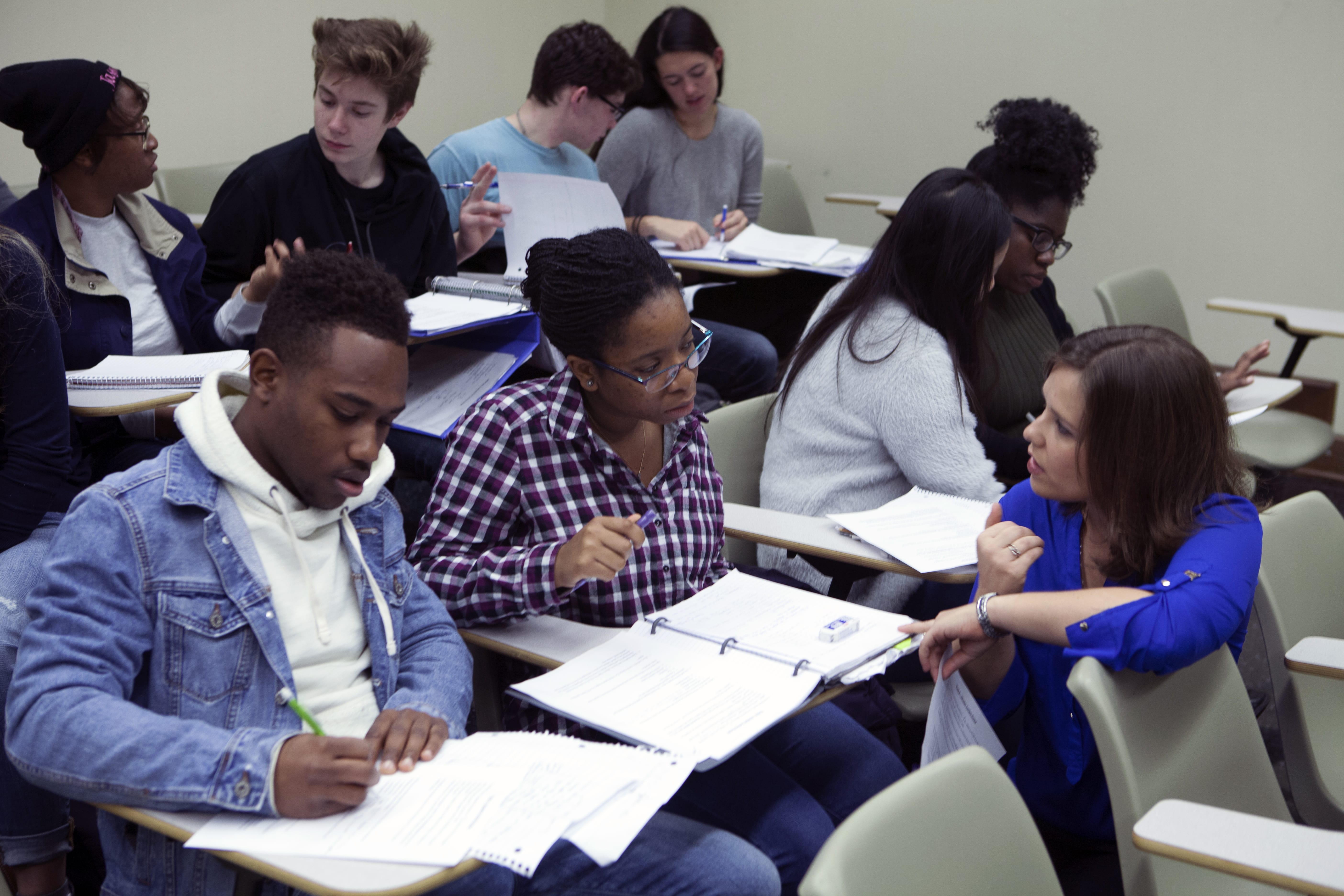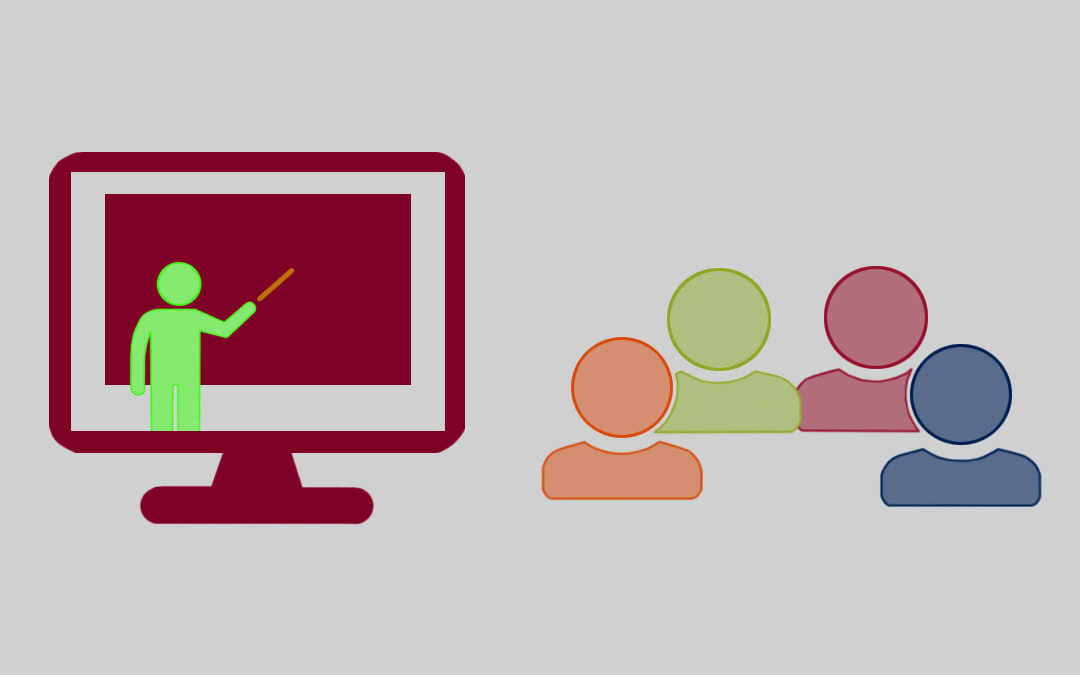What is a flipped classroom?
The main idea in a “flipped” classroom is to reverse the roles of individual space and group space in the learning process. This means that students first encounter new material on their own, and then focus on higher levels of learning like application and analysis in class, where they have the support of the instructor and their peers. The Flipped Learning Network’s definition captures the conceptual framework underlying a flipped classroom:
While the most common way to implement a flipped classroom is by recording lectures for students to watch in preparation for class, it is not necessary to use lecture videos at all. Other options include online simulations or demonstrations, or guided reading. No matter how the students encounter new material, it is crucial to the success of a flipped classroom that they come to class prepared and ready to engage in active learning.
Is anyone teaching in a flipped classroom at UChicago?

Professor Britni Ratliff with her students
An excerpt from one of Prof. Ratliff’s recorded lectures Students responded well to the flipped approach. In a student survey about the effectiveness of the flipped classroom, one of Prof. Ratliff’s students wrote, “It was much more effective to have the lecture information ahead of time, to absorb and take notes on it, and solidify my understanding and ask questions in class, as well as practicing applying the information in small groups in lecture.” It’s important to remember that flipping a course requires a great deal of preparation and often entails fundamentally changing the way that a class operates. Dr. Peggy Mason experimented with flipping Medical Neurobiology at the Pritzker School of Medicine but felt that the flipped course was not as effective as her usual lecture. Reflecting on her experience, she pointed out, “You can’t just say you’re going to flip a classroom and expect it to magically work.” It is essential to lay out a detailed plan well in advance of flipping your classroom; the more time you spend thinking how best to adjust your teaching for the new format, the better the chances that the flipped classroom will be a success. For example, Prof. Britni Ratliff had her students do small-group problem solving during the class time that would have been devoted to lectures in the past. While the students worked, Prof. Ratliff and her TA walked around the room and provided them with immediate feedback. Afterward, the entire class discussed problem-solving skills. Academic Technology Solutions (ATS) is available to help instructors who are interested in flipping courses but are unsure about how it would work. (See the Resources section at the bottom of this post.)
I assign reading—isn’t that a flipped classroom?
Expecting students to engage with new material on their own before class is not unique to flipped classrooms. Many, if not most college courses assign readings to be completed in advance of each class. It is reasonable to ask, therefore: What makes this different from flipping the classroom? Simply assigning reading may fail to implement two related features that are found in a genuinely flipped classroom. The first is that in a flipped classroom, students should be building on the knowledge they acquired individually when they come into the group space. In-class activities should give students the chance to apply the new concepts and work collaboratively and creatively. Often, in traditional lecture courses, the instructor will repeat material that was covered in the readings, relegating high-level learning to homework. Courses like these prompt students to say things such as “Why would I do the reading when it’s going to be covered in lecture anyway?” Instead, class time should be devoted to student-centered active learning. The second aspect is that at-home exposure to new content in a flipped classroom should be structured and engaging. Telling students, for example, merely to “read Chapter 4” does not necessarily accomplish this; students need more guidance. The quantity of material that students are expected to absorb also needs to be taken into account: assigning hundreds of pages of reading or hours of video invites students to skim and rush through the material, rather than taking the time to engage with it. Motivation is key to the success of a flipped classroom. Students are more likely to prepare when the materials for outside of class are well-produced, accessible, and interesting, and the time in class is spent on active learning that builds on what they learned on their own.
Resources at UChicago
If you are interested in flipping your course, you should contact Academic Technology Solutions (academictech@uchicago.edu) for help. ATS instructional designers can assist you in every aspect of your course redesign, including crafting active learning classroom activities that align with your course objectives. Remember that it’s not necessary to flip an entire course—you can flip just one unit, or even a single lesson. If you want to flip an entire course, you should make sure to start preparing early—at least 18 months ahead—so that you have enough time.
More Information about Flipped Classrooms
- Several universities have helpful online guides for implementing flipped classrooms, including Vanderbilt, Yale, and the University of Michigan.
- 7 Things You Should Know About Flipped Classrooms from Educause.
- This literature review of empirical research on flipped classrooms summarizes the current state of educational research on the topic:
- Giannakos M.N., Krogstie J., Sampson D. (2018) Putting Flipped Classroom into Practice: A Comprehensive Review of Empirical Research. In: Sampson D., Ifenthaler D., Spector J., Isaías P. (eds) Digital Technologies: Sustainable Innovations for Improving Teaching and Learning. Springer, Cham. https://doi.org/10.1007/978-3-319-73417-0_2
